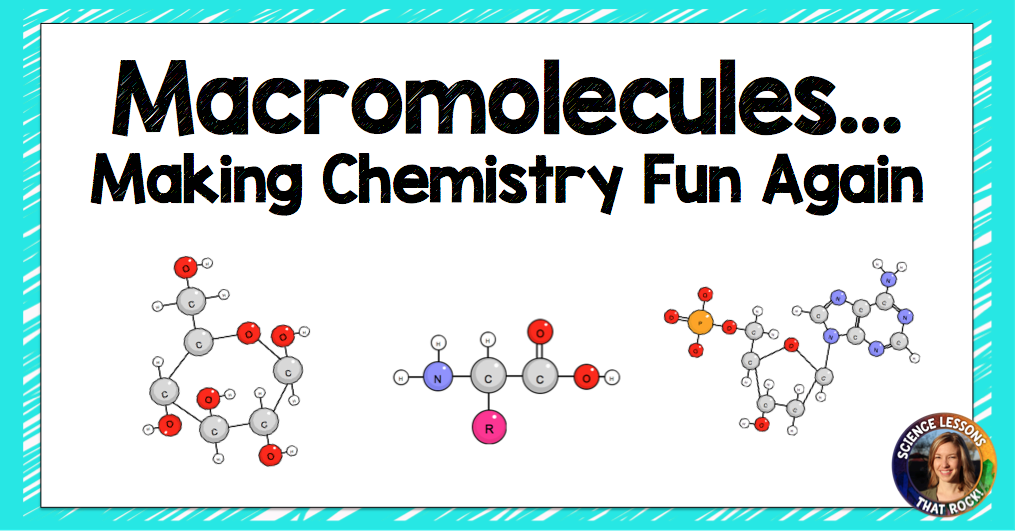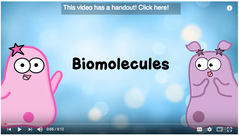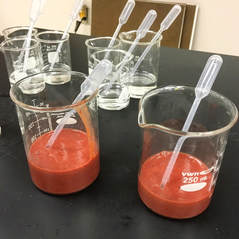Okay, so you can tell by the title of this blog post I’m a biologist and not a chemist. (Chemistry teachers, please don’t send me hate mail!) Honestly, I don’t love chemistry and I don’t love teaching it. BUT, I realize how important it is for students to understand biochemistry before I dive into a fun enzyme lab. There have been years where I thought “screw it, I’m just going to talk about macromolecules and cells without reviewing atoms and bonding.” Oh was I sorry. Most of my students didn’t have a strong enough chemistry background to understand polarity without reviewing bonds. Although most of my students took chem-phys the previous year, they didn’t understand how the chemistry they learned prior could apply to biology. So my advice is to take it slow, review the periodic table and bonding, have them build models, and really understand the structure of the 4 macromolecules before moving on in your cells unit. Once you get to membranes, they will understand them so much easier if they understand lipids. Once you get to DNA structure they will understand why it runs from 5′ to 3′ if they understand the structure of a nucleotide. They will also understand DNA replication and the enzymes involved so much better if they understand protein structure and folding. Have I convinced you yet? I hope so. Here are a list of fun ways to teach macromolecules and deepen student understanding:
1. Build Atomic Models. I’m lucky enough that I have access to model kits. I have my students build models of all the macromolecules. The best is when they can each build an amino acid, link them together, and see dehydration synthesis with their own eyes. Check with the chemistry teacher on your campus and see if they have kits you can borrow for a few days.
2. Emphasize Protein Folding. Lets be honest- of the 4 macromolecules, proteins are the rock star. It’s so important that students understand how and why proteins fold, and the consequences of them denaturing. My school purchased a kit called “protein toobers” where students pretend the “toober” is a long chain of amino acids. (The activity can be purchased HERE. I am not affiliated in any way with this company). Students add thumbtacks (side chains) and then have to fold accordingly. For example, if white thumbtacks are hydrophilic and yellow thumbtacks are hydrophobic then they need to fold the toober so the white thumbtacks face out and the yellow thumbtacks face in. It is fun for them to see that each group’s protein is folded differently based on the order they placed the thumbtacks. If you aren’t able to purchase this kit, I think it could easily be replicated with pipe cleaners and pony beads (click here to check out a similar product from Science with Mrs. Lau!)
3. Use Videos. It is always helpful for students to hear things explained more than once and in a variety of ways. Find videos that will help reinforce concepts already taught. Amoeba Sisters always have great videos and worksheets that go with them. Here is a link to the video on biomolecules and the associated worksheet.
4. Engage with Labs! There are a bunch of fun labs out there on macromolecules, especially enzymes. I love this liver enzyme lab from biology corner. Students will see how changing temperature and pH will affect enzyme reaction rates. It’s not the most fun lab to clean up after, but it’s inexpensive and fun for the students. You can buy a tub of chicken liver from the grocery store for less than $2 and that will last you the entire day. Tip: I’ve found I get the best results when I puree the liver in the blender instead of just cutting it into pieces.
5. Use Review Activities and Games. I have never met a student that didn’t love puzzles and games. It is way more fun to use these as formative assessment tools opposed to a study guide. I have a few available in my teachers pay teachers store I think you will enjoy! One is a macromolecules tarsia puzzle (pictured) where students have to pair up words with their definitions. Another option is a memory game where students flip over 2 cards at a time to try and find matches. I also have a flip book which is a fun review tool for interactive notebooks. Don’t miss my macromolecules bundle where you can buy them all at a discounted price!
What other fun ways do you teach macromolecules? Leave them in the comments!
Want to save this blog post for later? Click here to repin!













